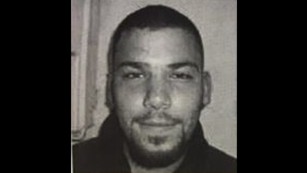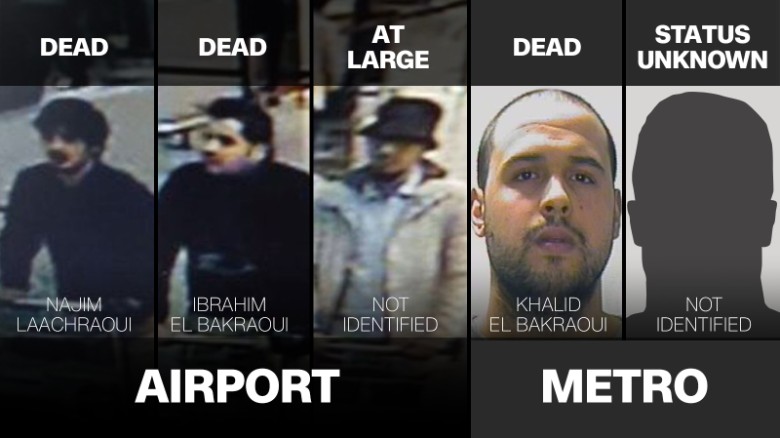The mysterious 'Syrian' thought to be at heart of ISIS attacks in Europe
His name is Naim al Hamed -- a 28-year-old described as "very dangerous and probably armed." His photograph on a bulletin circulated by French investigators to European security services shows a thick-set man with narrow eyes and a short beard.
And he may be a critical figure in both the Brussels and Paris attacks.

A bulletin distributed by the French National Police calls Naim al Hamed "very dangerous."
The bulletin -- entitled "Diffusion Urgente" -- was circulated hours after the Brussels attacks, and includes details about Hamed and two of the three men known to have carried out the attacks: Khalid Bakraoui and Najim Laachraoui.
In the bulletin, Hamed is described as from Hama in Syria, born on New Year's Day 1988. Whether that's his real identity is very much open to question.
A French source close to the investigation into the ISIS terror network active in both France and Belgium told CNN that European security agencies believe Hamed was involved operationally in the Brussels attack.
Unknown as yet: whether he was the man seen in surveillance images wearing light-colored clothing who escaped from the airport after dropping a bag containing explosives that failed to detonate, or the second man at the scene of the metro explosion. He may not have been present at either location.

Brussels terror suspects: Brothers, a bomb-maker and 2 people on the run
But the French newspaper Le Monde reported Friday that Hamed's DNA was found at the apartment in the Rue Max Roos in the Schaerbeek neighbourhood of Brussels, from which the three airport attackers left around dawn on the day of the attacks. As of late Friday the Belgian authorities had not confirmed the discovery of Hamed's DNA at the apartment
Investigators are beginning to put together a picture of Hamed's possible movements in recent months -- and of his links to Saleh Abdeslam, the only survivor among the Paris attackers, who was arrested in Brussels on March 18.
Latest on the Brussels attacks investigation
Like at least two of the Paris attackers, Hamed is thought to have arrived on the Greek island of Leros amid hundreds of refugees arriving from Syria, Iraq and elsewhere. Le Monde reports that he may have arrived on the island last September, several weeks before the two Paris attackers. French sources tell CNN that the ringleader of the Paris attacks, Abdelhamid Abaaoud, was also seen on Leros in September.

See inside Salah Abdeslam's alleged hideout 02:04
One possible line of inquiry as the investigation widens: was Hamed accompanied by the man arrested at the same address as Abdeslam in Brussels last Friday? The Belgian Prosecutor's Office names that man as Monir Ahmed Alaaj, also known as Amine Choukri -- although there are doubts as to whether either is his real name.
On October 3, Choukri and Abdeslam were stopped by German police near the city of Ulm and had their fingerprints taken, according to the prosecutor's office. That's where the link with Naim al Hamed firms up. He is thought to have traveled from Greece to a refugee center near Ulm. At around the same time as Abdeslam's visit, two refugees were reported missing from the center, according to one source.
A second source briefed by German investigators tells CNN that Hamed's photograph was shown to refugees at the center, and a number of people recognized him. CNN has been unable to establish when his photograph was circulated at the center.
The same source says a police document has Hamed listed in a European database known as the Schengen Information System as using a black Audi A3. The system allows national authorities in the European Union to enter and check alerts on certain categories of wanted or missing persons. The source says the entry is from March 10, 12 days before the Brussels attacks.
Choukri's fingerprints, according to the Belgian prosecutor, were found at a safe house used by the Paris attackers in the town of Auvelais. Significantly, police found a false Syrian passport bearing the name of Monir Ahmed Alaaj and a false identity card in the name of Amin Choukri when they raided a house in the Forest district of Brussels, a week before the Belgian attacks.
There are still questions about Hamed's true identity and his alleged role in either the Paris or Brussels attacks. Beyond dispute is that he is now one of the most wanted men in Europe, his whereabouts unknown.
News Courtesy: www.cnn.com











